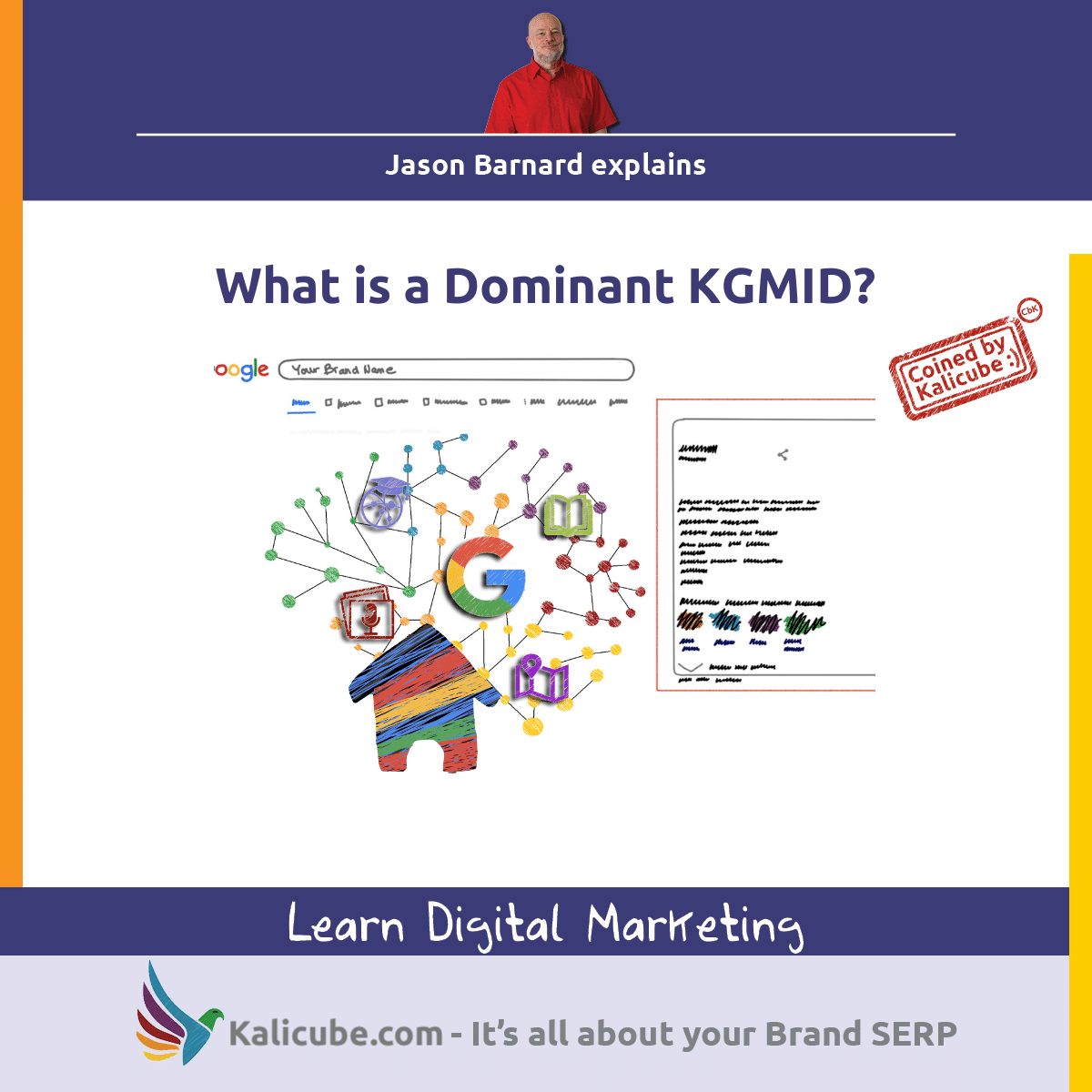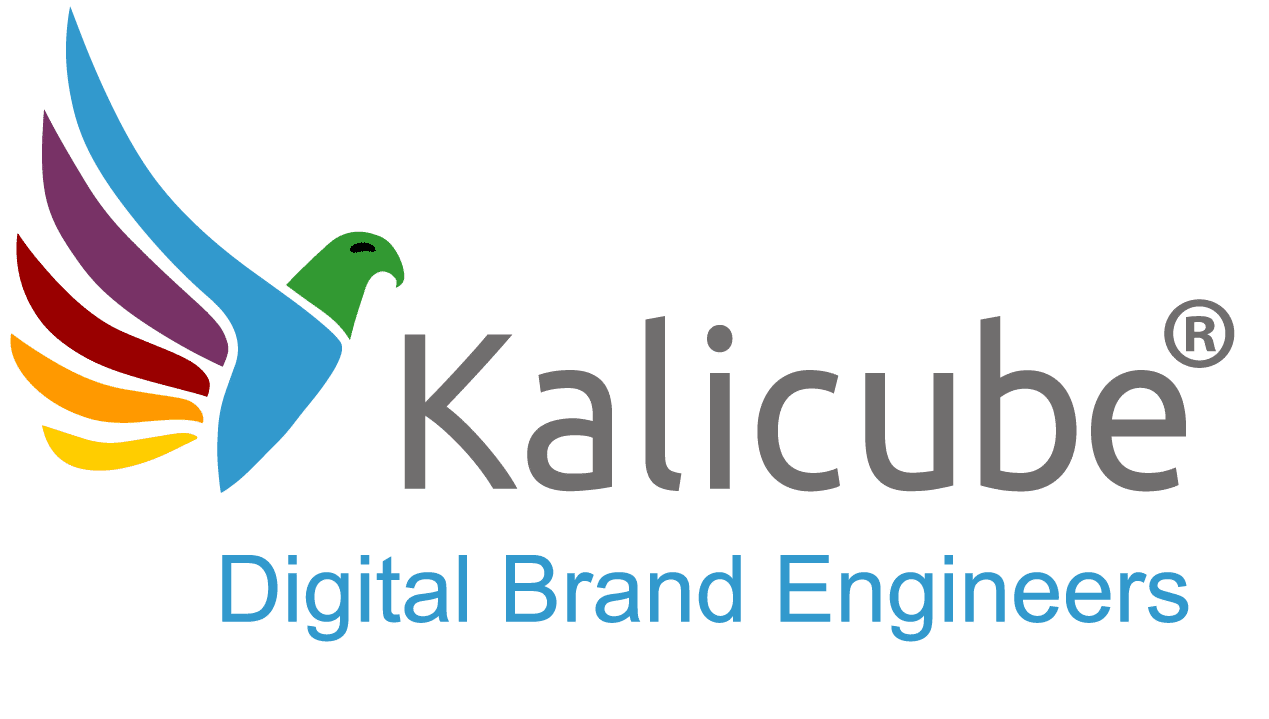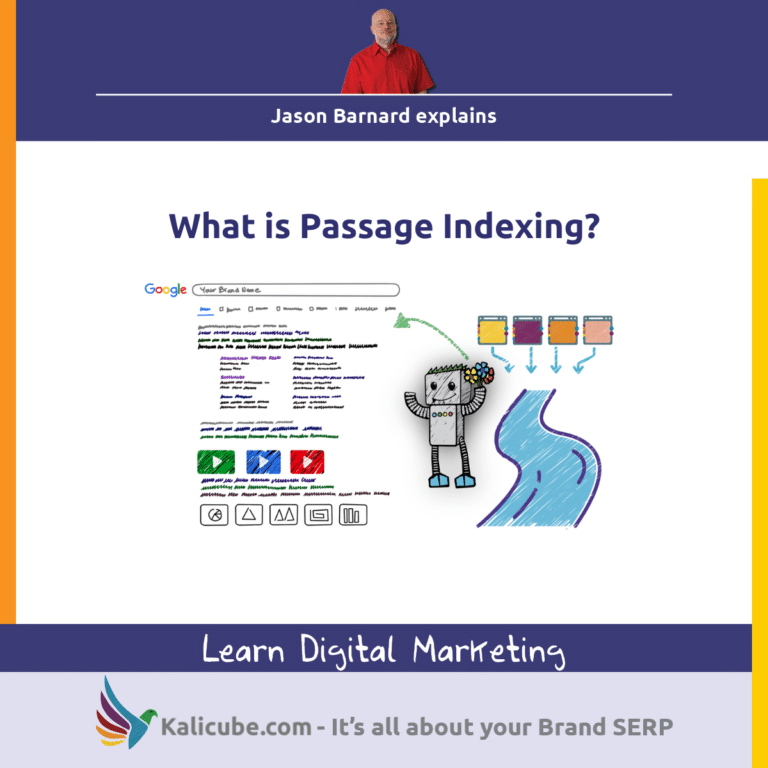Dominant KGMID in Google: What You Need To Know

Every Google Knowledge Panel has a KGMID (Google Knowledge Graph ID) identifier. It is a unique identifier for every entity in Google’s Knowledge Graph.
A Google Knowledge Panel is the information box on the right-hand side of a desktop search result. When Google is confident in its understanding of an entity, it will create a Knowledge Panel (as opposed to the free Google Business Profile) and serve it in the search results when it deems the Knowledge Panel relevant to the search. It is Google’s summary of the “facts” about the entity.
Entities can have multiple KGMIDs, and it gets complicated.
Establishing which KGMID is the dominant KGMID for an entity is crucial.
Google defines an entity as “A thing or concept that is singular, unique, well-defined, and distinguishable.” At Kalicube®, when we talk about entities, we talk about people, companies, and brands.
The Google Knowledge Graph is a repository for the “facts” Google understands about the world. The Knowledge Graph stores the facts in machine-readable language.
What is a Dominant KGMID?
The dominant KGMID is the most recognized or widely used ID for a particular entity within Google’s Knowledge Graph.
For example, suppose the entity “Jason Barnard ” has multiple KGMIDs because he is known as an author, digital marketer, and actor. In that case, the dominant KGMID is the one associated with his most well-known role.
Look at which KGMID is most frequently displayed in Google searches or is associated with most of the information Google recognizes about that entity to find the dominant KGMID. Identifying the dominant KGMID for optimization is essential to ensure you improve the correct entity information.
Entities with Dominant KGMID
Consider the entity “Apple.”
“Apple” has multiple KGMIDs because the entity has several meanings in different contexts. It is a fruit, technology company, and record company started by The Beatles. In this case, the dominant KGMID might be the one for Apple Inc., the technology company, due to its global recognition and high volume of search queries.
Another example is the name “Michael Jordan.”
Michael Jordan could be the famous basketball player or refer to other people who share the same name. In this case, the dominant KGMID is likely to be the legendary basketball player due to his worldwide fame and the high probability that a search for “Michael Jordan” is seeking information on him.
It’s essential to note that what is considered a “dominant” KGMID can vary based on geographic region and context. Google’s algorithms determine which entity a user is most likely searching for based on their query, search history, and other factors.
Why is Identifying the Dominant KGMID Important for Optimizing Search Engine Results?
Identifying the dominant Knowledge Graph ID (KGMID) is crucial for SEO for the following reasons.
- Understand Google’s Perception: Knowing the dominant KGMID helps you understand how Google interprets and represents an entity. When you know how Google understands an entity, you can fine-tune your content and SEO strategies to align with that understanding (and augment your KGMID).
- Influence Knowledge Panels: Every Google Knowledge Panel has a KGMID. By knowing the dominant KGMID, you can strategically influence the information in these panels.
- Improve Entity Disambiguation: Identifying the dominant KGMID is essential when multiple entities have similar names. If Google clearly understands the correct entity (represented by a dominant KGMID), it can better differentiate between them in search results.
- Optimized Information Control: When you understand which KGMID is dominant, you can ensure that the correct information about that entity goes to Google. Doing so, you guide Google to index the accurate information, affecting how it appears in SERP (Search Engine Result Pages).
- Global Dominance: In many cases, the dominant entity can vary by geographical region. However, if you optimize correctly, you can dominate the search results across multiple areas.
Google determines the dominance of a KGMID by its confidence in its understanding of an entity, the volume of search demand for the entity, and the richness and consistency of information about the entity.
What Factors Does Google Consider When Determining Which KGMID Is Dominant?
Google considers the following factors when determining which KGMID is dominant.
Probability
How likely is the user looking for this specific entity? Google uses factors like search history and geographic location to evaluate this.
Search Volume
The number of searches conducted for an entity can indicate its popularity and relevance, influencing its dominance.
Google’s Confidence
If Google has a strong understanding of an entity due to consistent and clear information across the web, it’s more likely to be dominant.
Information-richness
Entities with more comprehensive, diverse, and reliable information are often favored.
Geographic relevance
An entity’s dominance can change depending on the geographic region of the search because relevance can vary accordingly.
Press Coverage
Entities with widespread or significant press coverage may also be more likely to be dominant.
What Strategies Can You Use to Influence Or Change the Dominant KGMID Associated With a Particular Entity?
So strategies you can use to influence or change the dominant KGMID are in the list below.
Boosting Google’s Confidence: Maximizing existing press coverage can help you dominate competitors. For example, regularly publishing accurate, high-quality content about your business and having it appear in information-rich sources can increase Google’s trust in your business.
Expanding Digital Presence: If you are active on various online platforms and maintain a strong, consistent digital presence, this can also increase Google’s trust in your company.
Increasing Search Volume: Increase the search volume for your or the company’s name. Increasing search volume can eradicate ambiguity, especially in a geographically sensitive area.
Use Correct KGMIDs: Linking the right KGMID to the right company is essential when applying optimization signals. When the link is correct, Google gets the right information for the right business and confirms Google’s understanding of a particular business.
Optimizing Brand SERP and Knowledge Panels: Your brand, persona, or business must appear consistently and correctly on the SERP and in Knowledge Panels.
Please note: Achieving dominance is only sometimes possible, especially when trying to compete with larger, more well-known entities. Therefore, it’s essential to consider the level of competition, specific attributes of the entity, and other SEO factors when developing a strategy.
How Does Dominant KGMID Fit Into Brand SERP Optimization and Knowledge Panel Management?
Brand SERP Optimization: A dominant KGMID means that Google associates your brand significantly and specific search queries. This results in increased visibility and prominence in organic searches for your brand. When your entity is the dominant one, your brand gets the most attention, helping to push down other entities in SERP, thereby optimizing your Brand SERP.
Knowledge Panel Management: When your entity is dominant, it is more likely to have a Knowledge Panel, allowing you to control what information is in your Knowledge Panel. Regular maintenance and updating are necessary for a rich and dominant Knowledge Panel. Dominance can help ensure that the information in the Knowledge Panel is about your entity, reducing confusion and misinformation.
In both cases, achieving and maintaining a dominant KGMID helps to control the narrative about your brand on Google, offering clear benefits for branding, reputation management, and customer experience.
If you’re curious about improving your brand’s position on Google, book a call with Jason and start dominating with your brand online.




